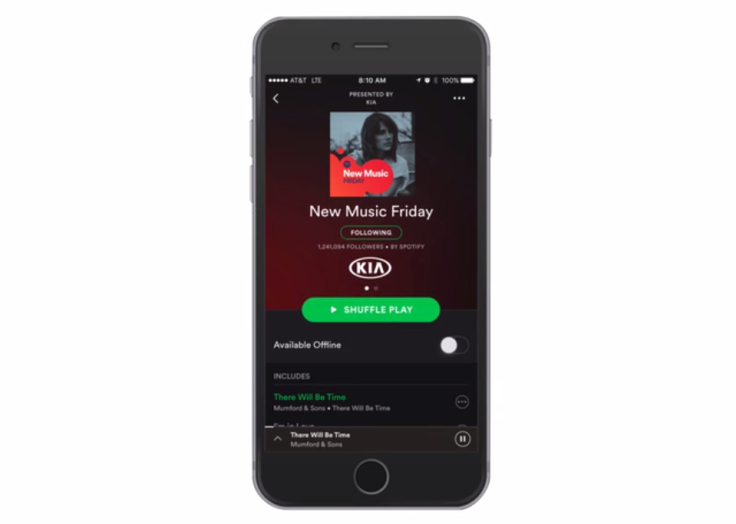Spotify Just Sold Your Favorite Playlist To An Advertiser

Your favorite Spotify playlist just got sponsored. On Thursday, the streaming music service announced that it’s allowing brands to sponsor the hundreds of context-, mood- and genre-specific playlists it has assembled over the years, giving them the chance to associate with times and places when people fire them up.
“Our playlists span every genre, mood and moment, soundtracking the day for millions of people around the world,” a company blog post read.
As Spotify has grown from a small startup in Sweden into a multibillion-dollar private company that collects money from nearly half of the world’s paying music subscribers, it’s amassed a ton of information about when, how and why people listen to music with it. During presentations made to advertisers last summer, executives pointed out that its users have crafted more than 2 billion playlists on its service, many of them explicitly created for specific times in their day. Its users have made more than 39,000 shower playlists, for example, and countless more playlists for activities like working out, cooking, drinking coffee and even going to sleep.
That vast store of intelligence has allowed Spotify to create its own playlists, and now a number of them, including Morning Coffee, are followed by millions of its listeners.
Spotify has also had a lot of success with its genre-specific and curated playlists. Rap Caviar, one of the first playlists it began touting, boasts 3 million followers; New Music Fridays, a selection of songs from all the albums and singles released at the end of every work week, counts more than 8 million followers.
All told, there are now more than 400 of these playlists, and they are now available to marketers in the United States; a similar program is in beta in the U.K. Sponsorships last one week, and during that time, the chosen playlist is adorned with the brand’s logo, and the brand gets total control over the display ads served on that playlist. The brand also gets to choose what to play during the playlist’s first commercial break. The spots, to be clear, only interrupt Spotify's free users; its subscribers can still listen without the ads.
Sponsoring playlists is an inevitable step for Spotify, not only because a majority of its listeners use its free, ad-supported tier, but because of how streaming services have changed the way people consume music. A full 45 percent of all ad-supported streaming music consumers listen to music primarily in playlist form, according to MIDiA Research, while just 31 percent say they still listen primarily to albums.
Being able to command a premium price for its advertising doesn’t hurt, either; Spotify still earns nearly 90 percent of its revenues from subscription fees, a balance it would probably like to revise.
© Copyright IBTimes 2024. All rights reserved.





















